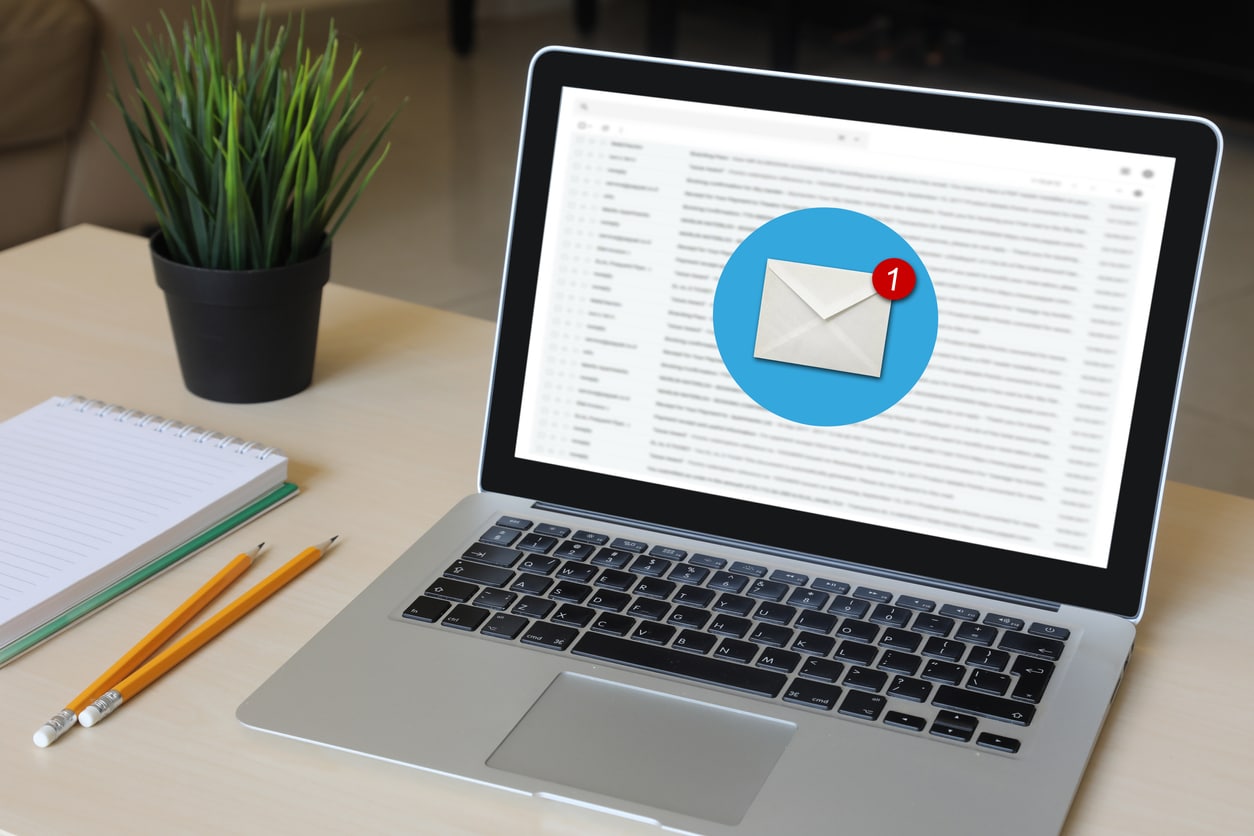Can Your Email Subject Line Be Better?
June 9, 2023

Is using the word “free” good or bad? What about emojis? Do I need to design different headlines for desktop and mobile? We’ve revisited our subject line best practices guide with the latest data on what works, and what doesn’t, along with easy-to-adapt examples you can test and try right now.
Standing out in an inbox gets more competitive every day. Like first impressions, an email to a new subscriber could end up being the last, or the beginning of a long-lasting relationship. The importance of the subject line in email marketing remains one of the most covered topics in digital marketing. And for good reason. 47% of consumers say they make the decision to read an email based on the subject line alone. 69% of consumers report emails as spam based solely on the subject line.
Some of the most well-known tips for crafting an eye-catching subject line remain as true as ever but have evolved with the benefit of time, testing, and data. We’ve updated our list of best practices with new statistics and examples about what’s working, what your competitors are most likely doing, and what you need to know to maintain consistently high open and click-through rates.
1. Keep Getting Personal
The practice of personalizing email subject lines is well established and has gone far beyond including the recipient’s name. Open and click-to-open rates of 50% and 58% respectively will always make a name a safe bet for personalization. But there is so much more.
Marketers have more robust data about their customer’s preferences that can be used to personalize a subject line. Details like birthdays, anniversaries, interests, and geographic location are always effective and help reduce the perception that your email might be spam.
More advanced tactics can leverage browsing and transaction history with a sense of urgency like “Only one pair of sandals left in your size” or citations to specific prior behavior like “Our Way of Saying Thanks for Dining Last Night [Offer Enclosed].”
But don’t include more than five personalized fields. Any personalization you use should be hyper-relevant and be based on data that hasn’t been purchased or inferred. Consumers are highly aware of privacy policies and the value of their personal data. Ensure that your messaging is truly relevant to the user and relates to prior interactions with your brand.
2. Be Concise and Choose Your Characters Carefully
The optimal length of an email subject line varies between mobile and desktop. Most experts continue to recommend no more than nine words or 60 characters. On average, the maximum subject line can be 60 characters long before it gets cut off by the email provider. Our sister brand, Campaign Monitor by Marigold, recommends a subject line of 41 characters so that each word appears on desktop, mobile, and tablet devices.
Each of your 41 characters must contribute value to your message and be clear about what you want the reader to do. Similar to how SEO works for websites, email subject lines can significantly increase click rates by using the right words. Studies show:
- The word “video” in the subject line increases open rates by 7% to 13%
- Email subject lines with numbers have 57% higher open rates than those not containing a number
- Email subject lines with “Fwd” in the subject line have 17% lower open rates
- Email subject lines featuring the word “free” are opened 10% more often
Be sure to deliver what your tagline promises. Opening an “urgent” email to discover there’s no real urgency in the email body will leave your audience annoyed. You might see an uptick in open rates, but your click-through rates and customer experience will suffer.
3. Omit the Word “Newsletter”
Do not, under any circumstances, use the word “newsletter” in the subject line of your email. Email open rates go down by almost 19% when this word appears in the subject line. That’s because people think of traditional newsletters as boring rather than full of valuable content. So even if you are sending a newsletter, don’t mention that. Mention the value content packed inside the email itself.
4. Dodge Spam Folders More Effectively
You want to keep your sender reputation pristine, and that means staying out of the spam folder. Nothing says “spam” to email recipients and internet service providers more than special characters (#%*@), excessive use of exclamation marks and messages in ALL CAPS. At best, your open rates will go lower and your unsubscribes will go higher. Even more likely, your emails will end up in the spam folder.
This list of spam words and phrases is well over 250 and is constantly evolving. But the usual suspects like “cheap,” “earn cash,” or “see for yourself” will likely endure. Consider using online spam checker tools and be sure to consult frequently with your client solutions teams on the most up-to-date ways to keep your delivery rates and sender reputation scores high.
Spam filters are much more sophisticated than in the past, so using one or two spam trigger words won’t automatically send your email to the spam folder. If certain words and phrases cannot be avoided, it’s imperative to focus on other means to ensure that your emails are not perceived as spam. Be sure to:
- Personalize the subject line with a name, location or birthday — anything that demonstrates that your email will have relevance to the recipient.
- Provide full context in your subject line. If you are running an online sale, avoid vague sentiments like “everything must go” or “for a limited time only.” Create tailored lines like “20% off for VIP customers through Labor Day.”
- Contact only recipients who have opted into your emails.
- Include a way to opt out of future emails.
- Design emails using clean code and standard fonts.
5. Use Emojis Thoughtfully
When first introduced, it was controversial to include emojis in an email subject line. Those days are long gone. Emoji use in email subject lines has increased by 775% over the past three years. Industry studies report that a little over half of marketers who use emojis in their subject lines report higher unique open rates.
Be careful with how you use emojis and ensure that they don’t come off as unprofessional or spammy. Context and tone are vital. If you are sending a transactional email, emojis are irrelevant. But if you want to convey warmth and familiarity, or promote a specific item that has an easily recognized emoji, it can be a great addition.
We don’t recommend using more than one emoji per subject line. You’ll also want to test your emojis across platforms and mobile devices, as they may render differently across each.
6. Create Targeted Subject Lines for Segmented Audiences
Email segmentation is the practice of dividing recipients into groups based on interests, behaviors, or demographics. Segmented email campaigns earn 760% more revenue than those that are just blasted out to your entire email list. Equally important, by sending different email subject lines based on hobbies, geographical location or simply by shoppers who purchased a specific product in your collection, your emails become more personalized and relevant to the recipient. Relevant emails have far higher engagement rates and lead to higher open and conversion rates, and reduce opt-on rates. These factors help reduce the chance that your emails are viewed by internet service providers as spam.
Once your email list is broken down into segments, craft your email subject lines with a personal connection to the topic. Some examples are:
- Location and hobby: “5 Bands Nashville Jazz Lovers Need to See”
- Birthday and product: “Add this Bracelet to Your Birthday Wish List”
- Profession and interest: “What Every Physician Should Know Before Starting a Private Practice”
7. Use A/B Testing for Everything
Companies that make A/B testing a routine part of their campaign launches cite marketing returns that are 37% higher than companies that do not routinely use A/B testing.
Consider leveraging A/B testing not only on your subject line, call-to-action or image but within “segments” of your “segments.” Create A/B tests that can deliver generational insights. Marketing to different generations requires careful attention and an understanding of how Boomers, Gen Xers, Millennials, and Gen Z respond to messaging. If you are not sure about what those distinctions are, be sure to download our report on Gen Z and the 2023 Consumer Trend Index which delves into communication and purchasing differences between generations.
Conclusion
The power of automation, data, and technology has made email marketing more valuable and efficient for building a brand but conversely, it has become a more crowded and competitive space when it comes to standing out in the crowd.
The experts at Sailthru can help you tap into not only the best automation and data strategies for your business but can help create customized solutions for every stage in your customer lifecycle. To read more about creating subject lines that stand out, download the guide from Emma, also part of the Marigold family of brands, Email Subject Line Tips and Best Practices for 2023.
The State of Brand Loyalty in the U.S. in 2023
Related



